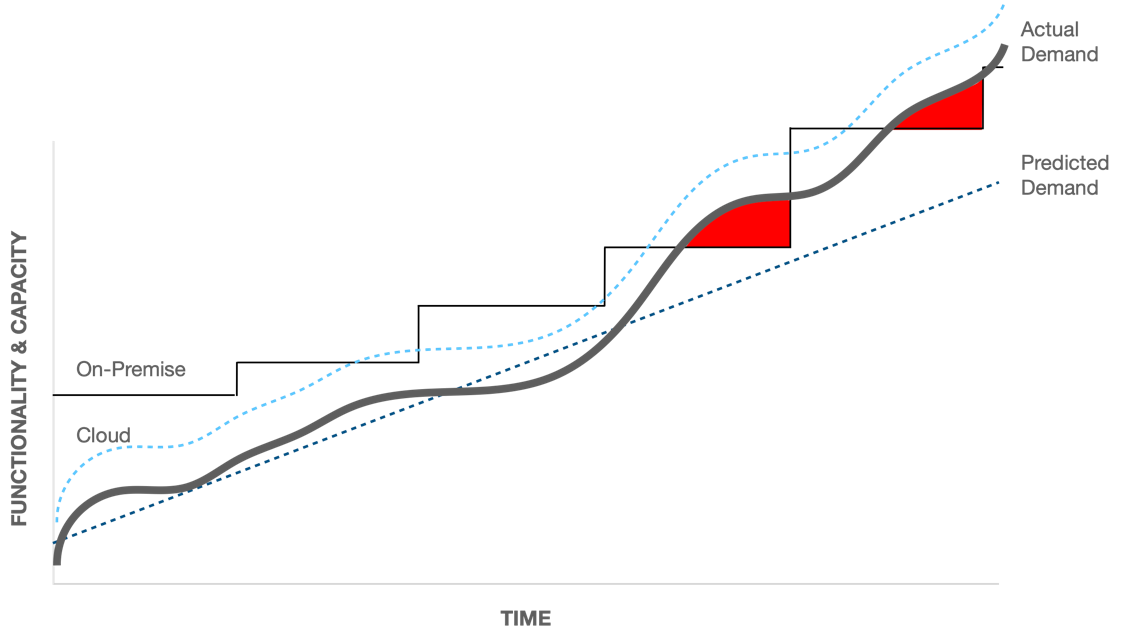Total Cost of Ownership “TCO” – the clock is already running.
Acquisition costs are actually incurred from the moment you decide something needs to be done. Like many other costs related to software and hardware purchasing decisions, acquisition costs tend to be hidden and the price you pay for your software is only a fraction of the TCO that’s incurred over its lifetime.
To make an informed decision, you need to understand all costs and to do that, you’ve got to ferret around a little.

If you’ve got a budget that’s detailed enough, take a look at the costs incurred by your IT department. Compare the total amount allocated to the purchases of software licence fees with the total amount allocated to technical infrastructure, disaster recovery sites, support, maintenance, staff, project management, premises, upgrades, education, and so forth. We’d place a huge bet on the former being the smaller figure. Let’s go back to basics:
What’s the difference between price and TCO?
To calculate software TCO you need to perform a comprehensive assessment of all related costs that will be incurred across your enterprise over its planned or expected lifetime. This includes the software itself, the hardware and technical infrastructure that’s required, management and support, premises, training, and the opportunity cost of downtime and other productivity losses. Oh and much of the same for the disaster recovery site too. TCO is the sum of all costs and expenses that relate to buying, implementing, using, and managing your software, and these begin even before the purchase has occurred. Price however, is merely the purchase price so, it’s plain to see why one is much more important than the other when a true comparison is required.
Obvious Cost Vs. Hidden Cost
When calculating TCO, the difficulties lie not only in the estimation of realistic figures, but also in the identification of the figures in the first place because the majority of costs incurred as a result of software ownership are in fact hidden. Imagine an iceberg. The tip you can see is only a fraction of its total – it’s generally understood that TCO can be upwards of 8x the purchase price of the software.
Take a look at the following table. When you begin to think about all the costs that are incurred in those areas that are “hidden”, you realise they dominate, so this notion is easy to believe.
| Acquisition Costs | Operating Costs | Change Costs | |
|---|---|---|---|
| Software | OBVIOUS | OBVIOUS | HIDDEN |
| Hardware | OBVIOUS | OBVIOUS | HIDDEN |
| People | HIDDEN | HIDDEN | HIDDEN |
| Facilities | HIDDEN | HIDDEN | HIDDEN |
| Integration | HIDDEN | HIDDEN | HIDDEN |
| Time | HIDDEN | HIDDEN | HIDDEN |
| Etc. | HIDDEN | HIDDEN | HIDDEN |
And then you’ve got risk to factor in too. Either in the risk you are mitigating or the risk you aren’t, because both should have a financial implication associated with them that either increase or decrease the TCO. Take a look at the following graph. It compares an on-premise software purchase with a cloud-based solution. As you can see, functionality and capacity increase differently. With an on-premise solution (in solid black), it increases through an upgrade / release cycle and through major investment when new software is purchased. With a cloud-based solution (light blue), the increase largely echoes demand because the capacity is elastic and functionality and capacity is only delivered when it’s required.

What you see here, shaded in red, are times when demand for functionality or capacity is greater than that which can be supplied by the on-premise model and the analogue processes required to support them. Each time this occurs, additional stress is placed on the process and the software, leading to loss of quality or functionality, error, and reputational damage. Conversely, any unnecessary distance between the functionality / capacity and actual demand is showing over supply, i.e. you’re paying for something that isn’t used, or required.
When it comes to TCO, this needs to be understood and incorporated into calculations because as a hidden cost, or perhaps even a hidden, hidden cost, it’s potentially one of the greatest. Understanding and recognising things like this is what is pushing people towards cloud-based software and in-fact the whole “digitalization” of our industry. Adoption is ultimately inevitable, the only thing to really decide is timing, but like we said right at the start, the clock is already running.

